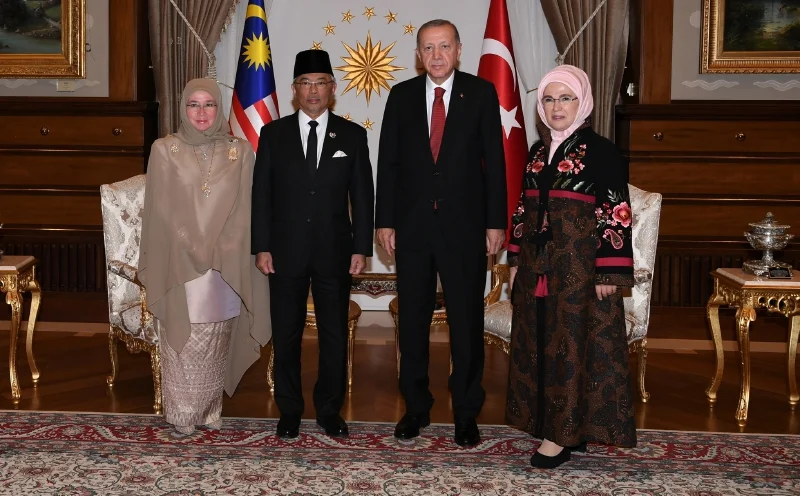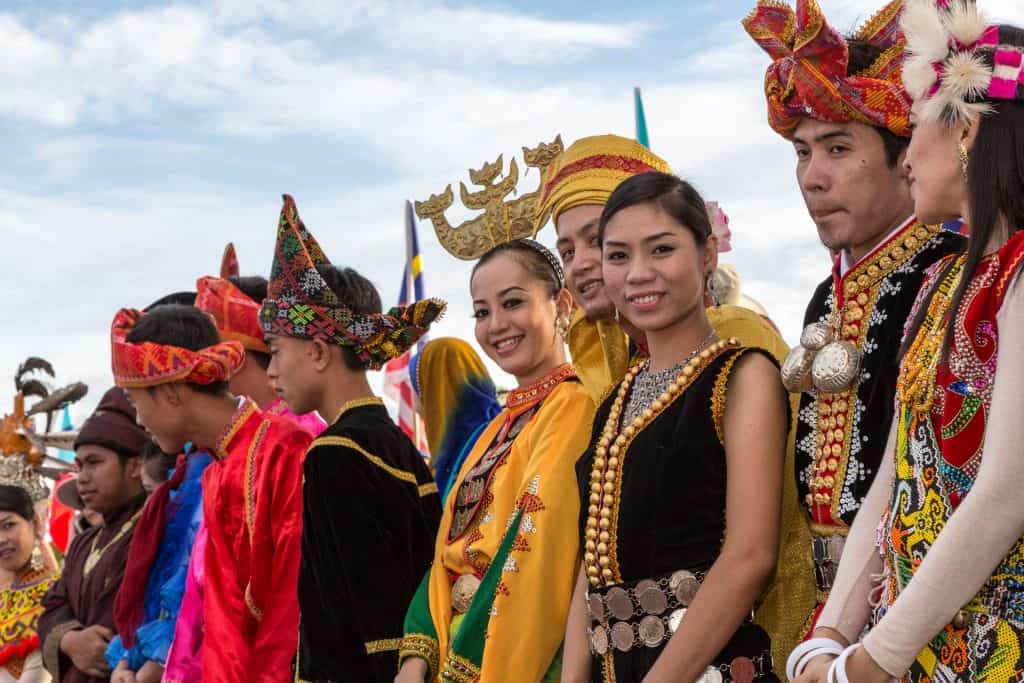The Malaysian government recently commented on the official use of the national language, Bahasa Malaysia (BM), internationally. It has been suggested that ASEAN adopt BM as its “second official” language. Depending on how all ten member nations handle this, such a proposal could be an unnecessary distraction for ASEAN and an inconsequential, non-issue for the grouping.
On February 25th 2022, Prime Minister Ismail Sabri Yaakob paid an official visit to Thailand. The two leaders discussed bilateral ties, economic cooperation, and regional and international issues. He apparently spoke in Bahasa Malaysia (BM) at all official functions in Bangkok. Reports also claimed that the Prime Minister said all Malaysians on official duty should use BM internationally because “it is our language, there is no reason to feel ‘awkward’”. A month later, a second proposal was made, this time for BM to be made the “second official” language of the Association of Southeast Asian Nations (ASEAN). ASEAN has a “working”, not an official language. It is English.
This is not the first time Malaysian leaders made such proposals. In July 2017, a former PM proposed that BM be made the “main” language of ASEAN and become one of the world’s “major mediums”. This was less than a year before the nation’s 2018 General Elections (GE14). In 2015, when Malaysia was the ASEAN chair, the then Communications and Multimedia Minister suggested that ASEAN should use BM as its “homogenous” language. He stated this at a seminar on the Malay language at a Malaysian public university. In 2011, the then Minister of Information, Communication and Culture made a similar suggestion when he visited Indonesia.
Southeast Asian or ASEAN identity?
The fact is that each ASEAN nation has an official national language. After decolonisation, and during the hard decades of nation-building through most of the 20th century, many countries of Southeast Asia were conscious of their mother tongues. There was an emotional feeling to revitalise them and reject the languages of their previous colonial governments.
However, it is also logical that ASEAN has not declared an “official” language. To table an official language would be perceived as an act of dominance of one identity over a multitude of other identities in the region. So, ASEAN decided upon a “working” rather than an official language from the very beginning. English was the natural decision as ASEAN’s 5 “founding fathers” were very comfortable in communicating in English.
The 1967 ASEAN Declaration (also called the Bangkok Declaration) was written in English. It was a very short document that officially launched the regional grouping. No mention of language, official or working, is in that document.
However, out of the five points in the Declaration, two are relevant here. First is the statement “…in an increasingly interdependent world, the cherished ideals of peace, freedom, social justice and economic well-being are best attained by fostering good understanding, good neighbourliness and meaningful cooperation among the region’s countries already bound together with ties of history and culture”.
It is clear from this statement that the original five ASEAN nations recognised their interdependence and the need to understand history and culture for practical cooperation. Also, the region at the time was navigating the arduous process of physical and psychological decolonisation.
Another sentence in the Declaration reads, “…the countries of South-East Asia share a primary responsibility for strengthening the economic and social stability of the region and ensuring their peaceful and progressive national development, and that they are determined to ensure their stability and security from external interference in any form or manifestation in order to preserve their national identities in accordance with the ideals and aspirations of their peoples”.
The need for regional stability was vital. To single out any specific Southeast Asian language as the official language of ASEAN would be insensitive and counterproductive. It would have upset other communities. They had a sense of a Southeast Asian identity without having to “straight-jacket” it in an institutionalised Declaration.
Working language, not the official language
ASEAN became a grouping of 10 nations in 1999. In 2007, the ASEAN Charter was produced drawn up. Its purpose was to launch a united ASEAN Vision under the motto “One Vision, One Identity, One Community”. The original was written in English and translated into the languages of all ten ASEAN countries. This reflects recognition of Southeast Asia’s linguistic diversity and ASEAN’s commitment to a policy of engagement amidst this diversity.
Article 34 of the Charter clearly states that English shall be the working, and not the official, language of ASEAN. The reality is that for thousands of years, Southeast Asia has never seen itself as a self-contained, unified identity that needed to be named or required to be separate from others. The region has never had a single identity, name, religion, or language. The region’s land and seascape have also given this region its uniqueness.
Since antiquity, Southeast Asia’s centrality along the patterns of trade winds and shipping routes has placed Southeast Asia at the crossroads between the “west” and “east” for millennia. The region’s identity evolved from this natural openness, connectivity, and community engagement.
Does it matter if ASEAN has either an official or second language? Would there be geopolitical consequences for the region? Does ASEAN currently need an official language to give it a more concrete identity or boost its geopolitical agency? Or are these latest proposals by Malaysia mere distractions and of minimal geopolitical consequences?
Although most regional organisations are multilingual, ASEAN’s working language of English is meant to promote convenience and pragmatism. This is unique and has worked very well for over 55 years. At the same time, ASEAN has not been actively rejecting the region’s indigenous languages.
Having said that, however, the grouping ought to have more robust language policies to ensure that the indigenous languages continue to thrive and enrich the communities. Universities around the region, for example, could run programs in indigenous languages funded by ASEAN agencies. The top administrators of these universities could also encourage their scholars to publish more top quality articles and books in the national languages of the region, again funded by ASEAN-led agencies.
Malaysia had proposed BM as ASEAN’s “second language” (bahasa kedua). Previous leaders have used the terms “main” and “major medium”. ASEAN does not even have an official language, so Malaysia’s suggestion for a “second” language is moot.
The point is that English has functioned as a medium of communication within ASEAN to project its agency in regional and international geopolitics. English as the grouping’s working language reinforces its pragmatic approach to regionalism. This approach has worked so far over the last 55 years. English is also currently a global lingua franca.
BM could be added as another working language for ASEAN, together with English. For that matter, it should be left open for any other regional language to become the grouping’s working language potentially. Furthermore, ASEAN need not declare any official language, whether it is English or BM, or both. Most importantly, though, ASEAN needs to set its priorities, given the increasingly volatile geopolitical position of the region.
Focus on ASEAN’s priorities
For example, China’s real challenge to US global hegemony has resulted in increased pressure on ASEAN to re-think its neutral position. It is expected to review its principles of engagement. Also, ASEAN’s recent underperformance concerning the coup in Myanmar has nothing to do with this issue of language.
Since the Myanmar coup of February 2021, ASEAN has faced severe credibility issues. Despite a long record of successes, this episode has challenged ASEAN centrality. The case of language or “identity” played no role in ASEAN’s apparent obliviousness to an impending coup. It is unfortunate that ASEAN’s response to it has been hesitant, uncertain, and, at best, lethargic.
ASEAN should have sent a delegation to Myanmar immediately after the coup to decide how to proceed with an emergency summit. From the beginning, ASEAN should have shown leadership. Again, it is doubtful that such oversight was lacking because it was somehow related to the issue of language.
A strong impetus for ASEAN’s formation was that small countries in the region no longer wanted to feel marginalised or dominated by any power. In 1955, Indonesia’s President Sukarno hosted the Asian-African Conference in Bandung. In 1961, drawing on the principles agreed to in Bandung, the Non-Aligned Movement was established in Belgrade, Yugoslavia.
Sukarno delivered his compelling speech, representing the sentiments of the oppressed and marginalised peoples of the Third World. (https://youtu.be/DRIch247vb8). He spoke of the fight against the oppression of the “coloured peoples…the so-called ‘coloured peoples’” across the continents in perfect English, complete with emotional expression and intonation.
For many countries in Southeast Asia, the colonial baggage is real, but a balanced attitude must take precedence for pragmatism. For ASEAN, this means being flexible enough to include other working languages besides English, which is the global lingua franca. This could mean including BM, and other regional languages, provided pragmatism and logic prevail.
[Photo credit: Internet]
#AsianDefenceInsights #DefenceInsights #ASEAN #PoliticsandDiplomacy


